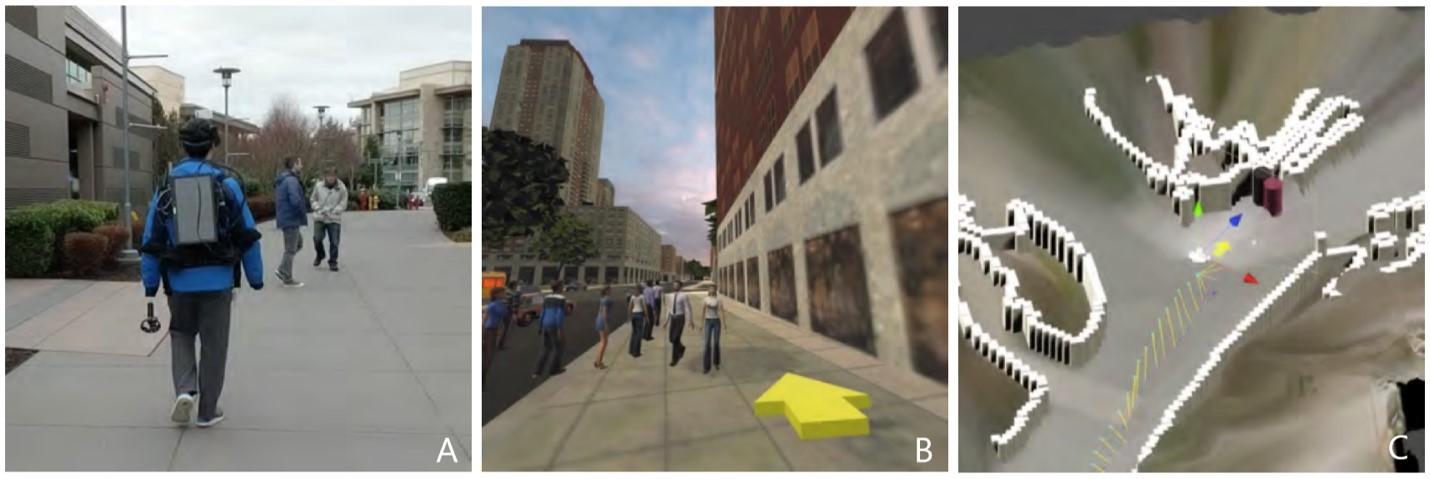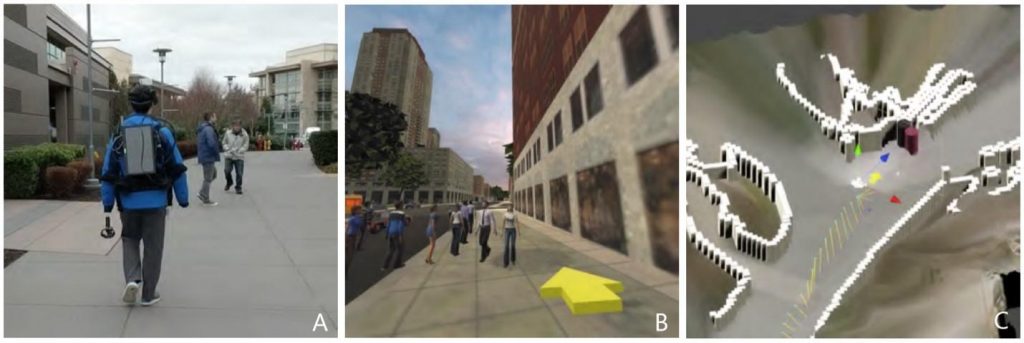

Dream or nightmare? Microsoft’s VR technology will turn your real walking route into a virtual route
Microsoft's DreamWalker virtual reality system lets you walk around the streets blindfolded instead of taking the bus.

Imagine this: you put on a VR headset, isolate yourself from the real world, replace it with a virtual world, and then walk to work? What's wrong with that?
Maybe a lot, but Microsoft thinks its DreamWalker VR system can let users do just that without crossing canals or oncoming traffic.
For those who are willing to put some faith in technology, if they would rather pretend that they are strolling through Manhattan than wandering through dreary suburban landscapes, DreamWalker can provide a solution.
Whether people actually want to do this is not the question. Microsoft researchers say it's technically possible for a fully immersive VR headset (as opposed to augmented reality) to do this, thanks to GPS, Windows Mixed Reality "inside-out tracking" and Two kinect-style RGB depth sensors (RGBD), which can help users avoid obstacles.
"The system can adjust based on the route chosen, so that a route to the grocery store or bus stop can be transformed into a route through Times Square in virtual reality," Microsoft said.
DreamWalker's demo kit includes a Samsung Odyssey headset, an HP Omen backpack VR PC, a Xiaomi Mi 8 for GPS functionality, a battery pack, two Intel RealSense 425 RGB depth cameras, and a Windows Mixed Reality controller.
The project demonstrates how Microsoft is using mobile hardware and input sensors to push the limits of "spatial computing." “Spatial computing” includes products such as Oculus Rift, Microsoft HoloLens and Google-backed Magic Leap.
The researchers will demonstrate the system this week at the 2019 ACM User Interface Software and Technology (UIST) Symposium in New Orleans. Therefore, this technology is part of Microsoft's development of new user interfaces that devices such as HoloLens may use in the future.
VR technology is still in its infancy, but Facebook's $400 Oculus Quest wireless headset has some hopeful about its future.
The Microsoft researchers behind DreamWalker have optimistic predictions for the technology, even if the development of VR sounds pretty scary for humans. In the future, going to the bathroom may be the only reason people leave virtual reality.
"We believe that future computer users will spend more time in virtual reality, where they will be immersed in entertainment, education and work environments for extended periods of time." It is entirely possible that future virtual reality users will simply complete real-world tasks. activities, such as going to the bathroom or sleeping, while interrupting their VR session," the researchers wrote.
As demonstrated in the video, DreamWalker guides users through a virtual space with a yellow arrow informed by its sensor data. Users select a target destination on the map and then put on a VR headset to experience another location, such as downtown Manhattan with traffic, pedestrians, and city buildings.
"Behind the (VR) scene, DreamWalker allows users to reach their real-world destination via visual directions at normal walking speed, while detecting obstacles along the way and presenting corresponding VR objects to prevent collisions," the researchers explained.
DreamWalker fuses data streams from two RGB depth cameras, inside-out optical tracking and real-time GPS positioning data to detect 3D obstacles and other people around the user. DreamWalker tracks the user's 3D environment and continuously updates a map of walkable areas, which records real-world coordinates and landmarks such as buildings and walkable paths. "
Real obstacles are replaced by virtual ones, and the path predicted by the system should be consistent with the user's path in the real world.
The project also attempts to address some of the limitations of augmented reality, such as Microsoft's HoloLens, which allows users to see the real world through augmented overlays, much like the Pokemon Go game.
VR, on the other hand, isolates users from the real world and has the disadvantage of requiring use in an indoor controlled environment.
Developed on an older Microsoft system called VRoamer, DreamWalker can detect obstacles on the street in real time while also tracking pedestrians and standing people around the user.
Original author: Liam Tung
This article is from a translation, if you want to reprint, please obtain authorization from this site first.
